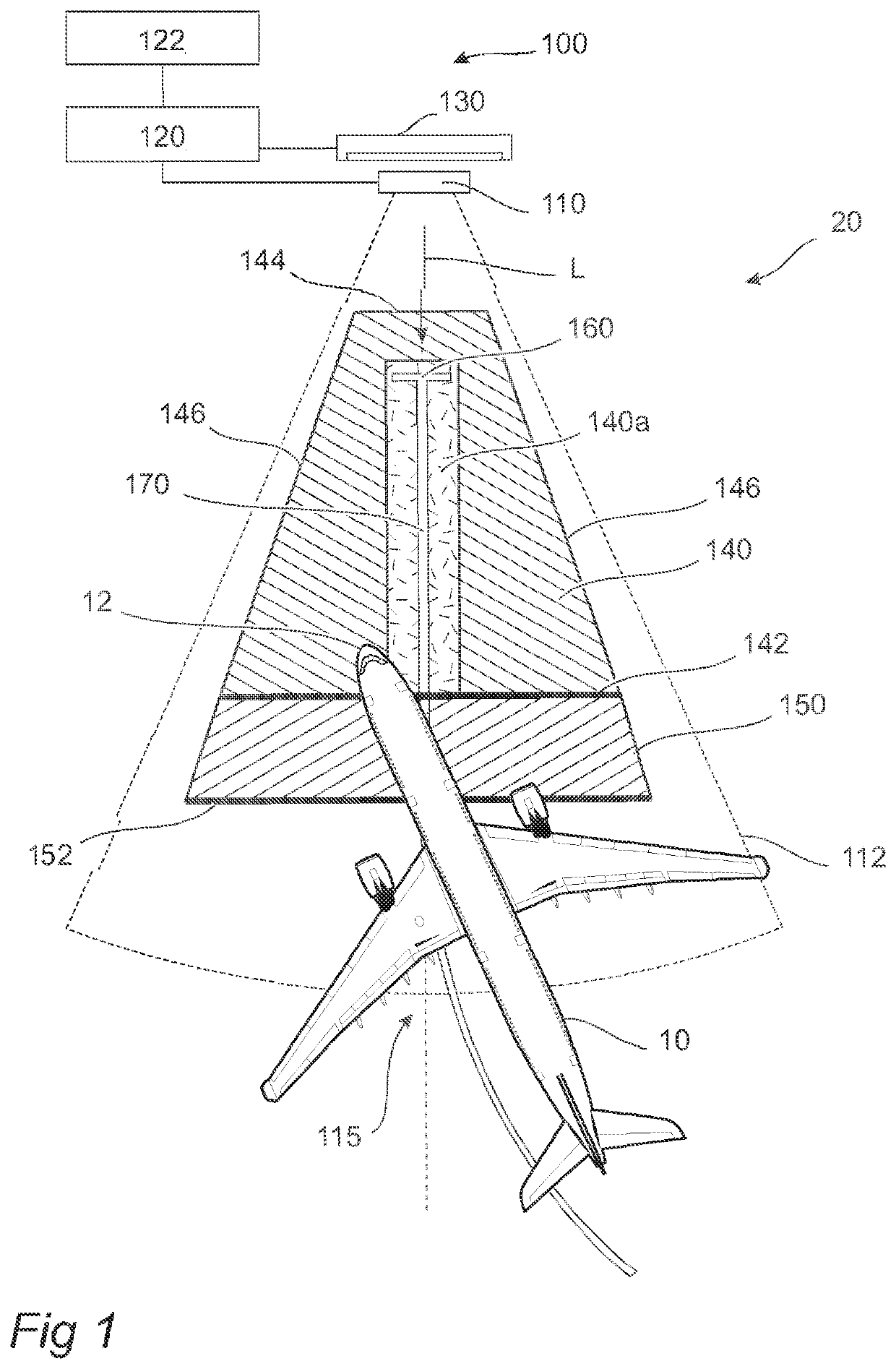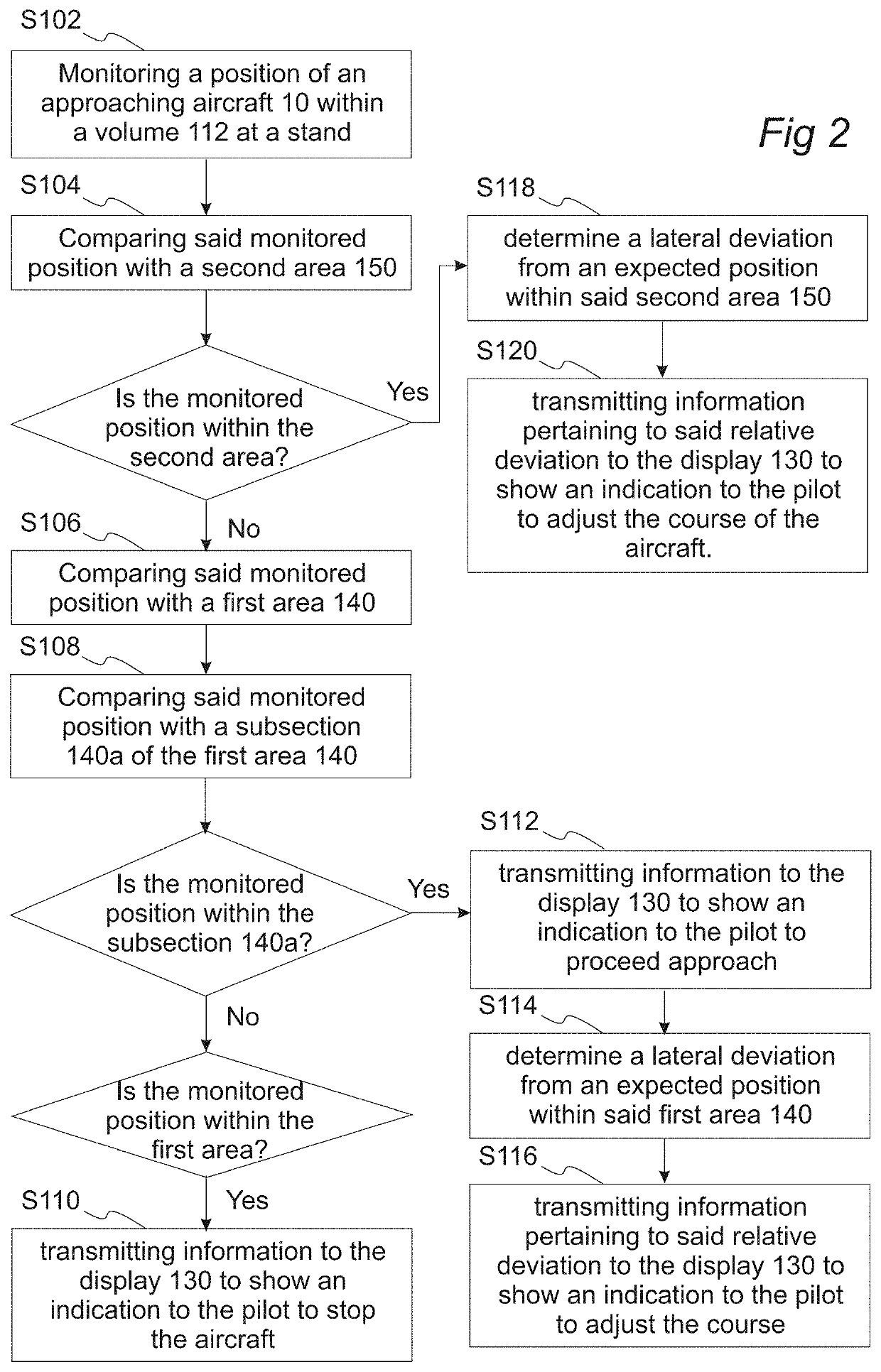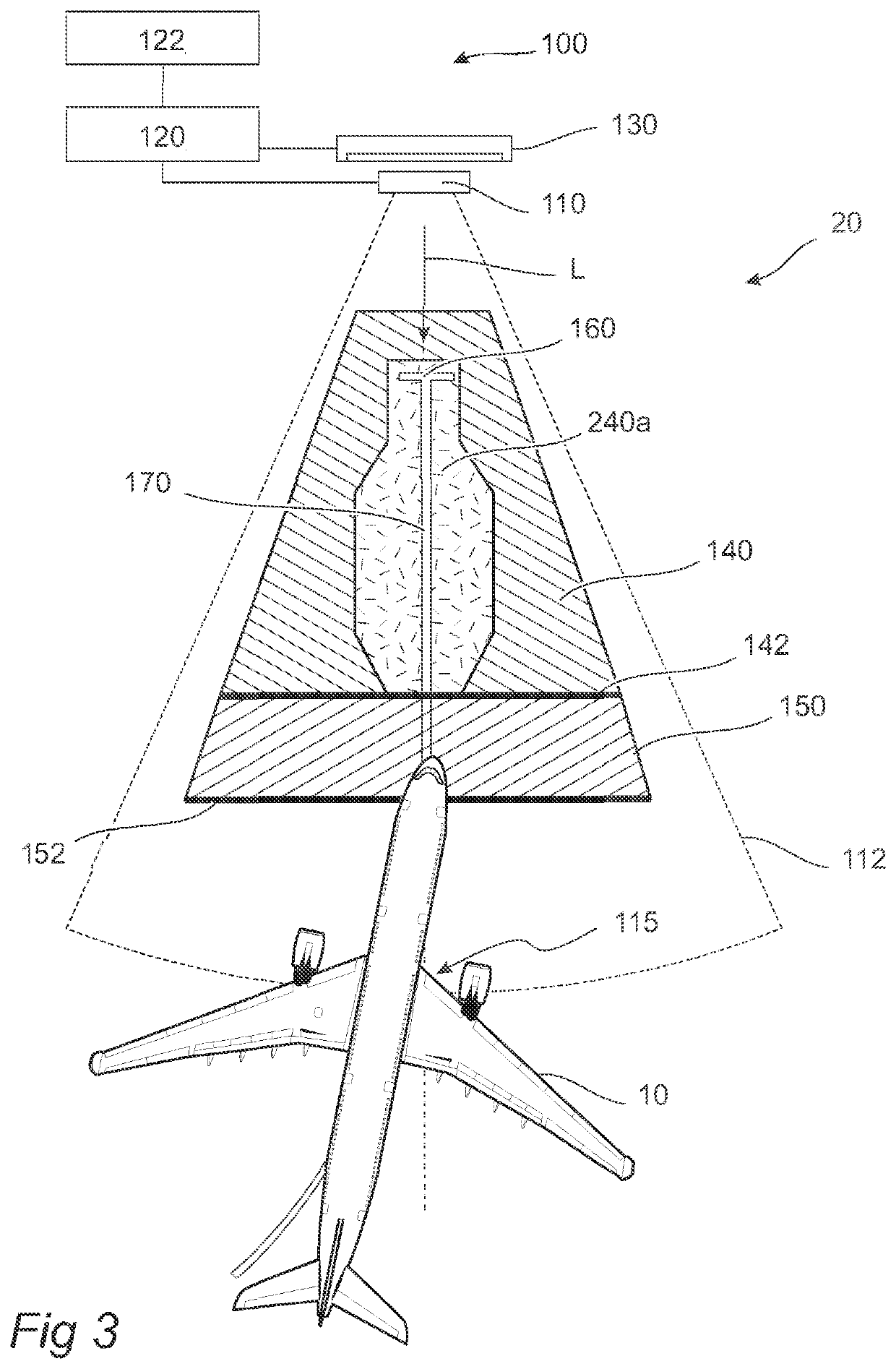Method and a system for guiding a pilot of an approaching aircraft to a stop position at a stand
a technology for approaching aircraft and stand, which is applied in the direction of instruments, transportation and packaging, and reradiation, etc., can solve the problems of large turning radius, high degree of interruption during docking, and inability to handle larger aircra
- Summary
- Abstract
- Description
- Claims
- Application Information
AI Technical Summary
Benefits of technology
Problems solved by technology
Method used
Image
Examples
Embodiment Construction
[0069]The present invention will now be described more fully hereinafter with reference to the accompanying drawings, in which currently preferred embodiments of the invention are shown. This invention may, however, be embodied in many different forms and should not be construed as limited to the embodiments set forth herein; rather, these embodiments are provided for thoroughness and completeness, and fully convey the scope of the invention to the skilled person.
[0070]FIG. 1 shows an aircraft docking system 100 according to an example embodiment. The aircraft docking system 100 comprises a position monitoring system 110 being arranged to monitor a position of the approaching aircraft 10 within a volume 112 at the stand 20. The position monitoring system 110 is a laser-based position monitoring system adapted to continuously scan the volume 112 at the stand 20. A laser beam is emitted from the position monitoring system 110 e.g. via a vibrating mirror arrangement or an acousto-optic...
PUM
 Login to View More
Login to View More Abstract
Description
Claims
Application Information
 Login to View More
Login to View More - R&D
- Intellectual Property
- Life Sciences
- Materials
- Tech Scout
- Unparalleled Data Quality
- Higher Quality Content
- 60% Fewer Hallucinations
Browse by: Latest US Patents, China's latest patents, Technical Efficacy Thesaurus, Application Domain, Technology Topic, Popular Technical Reports.
© 2025 PatSnap. All rights reserved.Legal|Privacy policy|Modern Slavery Act Transparency Statement|Sitemap|About US| Contact US: help@patsnap.com



